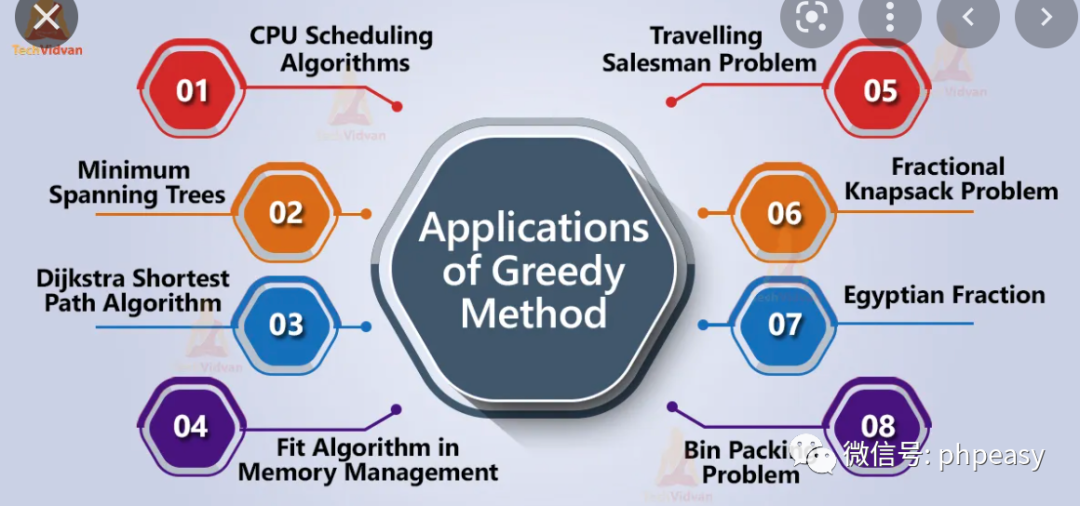贪心算法在数据结构设计中的应用:优化数据流处理
发布时间: 2024-09-10 06:19:07 阅读量: 111 订阅数: 30 


# 1. 贪心算法概述及数据结构基础
## 1.1 贪心算法简介
贪心算法(Greedy Algorithm)是一种在每一步选择中都采取在当前状态下最好或最优(即最有利)的选择,从而希望导致结果是全局最好或最优的算法。在许多问题中,贪心算法能提供简单而有效的解决方案。
## 1.2 数据结构基础
贪心算法的实现常常依赖于合适的数据结构来维持和更新状态信息。基础的数据结构包括数组、链表、树和图等。在贪心算法中,我们经常使用优先队列(如最小堆或最大堆)、堆栈和队列等结构来优化算法性能。
## 1.3 贪心算法与数据结构的关系
贪心算法与数据结构之间的关系十分密切。数据结构的选择直接影响算法的效率。例如,在解决任务调度问题时,若使用堆来维护可调度的任务集合,可以达到O(log n)的时间复杂度,大大优化算法性能。
## 1.4 实操入门案例
下面是一个使用贪心算法解决最小生成树问题的入门案例。考虑一个带权的无向连通图,我们的目标是找到一个边的子集,使得这些边构成的树包含图中所有顶点且总权值最小。
```python
import heapq
def prim(graph):
mst = [] # 最小生成树集合
edges = [(cost, u, v) for u in graph for v, cost in graph[u]] # 所有边及权值
heapq.heapify(edges) # 将所有边构造成最小堆
visited = set() # 访问过的顶点集合
while edges or len(visited) < len(graph):
cost, u, v = heapq.heappop(edges) # 弹出最小权值的边
if v in visited:
continue
visited.add(v)
mst.append((u, v, cost)) # 将边添加到最小生成树集合
for next_v, next_cost in graph[v]:
if next_v not in visited:
heapq.heappush(edges, (next_cost, v, next_v)) # 将邻接顶点的边加入堆中
return mst
```
该代码段使用了Python的`heapq`模块,实现了普里姆算法(Prim's algorithm),这是一个典型的贪心算法。通过这个实例,我们可以看到,贪心算法的关键在于每一步都做出局部最优选择,以此期望得到全局最优解。
# 2. 贪心策略在数据流处理中的应用
在大数据时代,数据流处理作为一种实时处理连续数据的技术,已经变得越来越重要。在这样的背景下,贪心算法以其解决问题时的高效性和实用性,在数据流处理领域发挥着不可忽视的作用。本章节将深入探讨贪心策略在数据流处理中的应用,包括贪心算法的基本概念、数据流处理的关键技术,以及贪心算法在实际数据流处理场景中的实操案例。
## 2.1 贪心算法的基本概念和原理
### 2.1.1 贪心算法定义与特性
贪心算法是一种在每一步选择中都采取在当前状态下最好或最优(即最有利)的选择,从而希望导致结果是全局最好或最优的算法。贪心算法的定义相对简单,它不从整体最优解出发进行考虑,只做出当前看来最好的选择,但其成功的关键在于问题是否满足贪心选择性质,即局部最优解能决定全局最优解。
贪心算法具有以下几个重要特性:
- **无后效性**:某个状态的贪心选择是基于当前状态的,不依赖于状态转移过程。
- **贪心选择性质**:通过局部最优选择,希望导致全局最优解。
- **最优子结构**:一个问题的最优解包含其子问题的最优解。
### 2.1.2 贪心算法与动态规划的对比
贪心算法与动态规划都是解决优化问题的方法,但它们在解决问题的策略上存在显著差异。
- **决策方式**:贪心算法每一步都做出局部最优的选择,但不保证最终结果的全局最优;动态规划则考虑了多种状态,通过构建状态转移方程,逐步找到全局最优解。
- **适用范围**:贪心算法适用于具有贪心选择性质的问题,而动态规划适用于具有重叠子问题和最优子结构的问题。
- **求解效率**:贪心算法通常具有较低的时间复杂度,因为它不需要像动态规划那样存储子问题的解;动态规划则可能因为存储了大量的子问题解而导致较高的空间复杂度。
## 2.2 数据流处理的关键技术
### 2.2.1 数据流模型简介
数据流模型是连续的数据输入与处理的抽象表示。在数据流模型中,数据以一个连续的流的形式到达系统,并需要实时地进行处理。数据流模型通常关注以下几个方面:
- **时间特性**:数据的到达是按照时间序列顺序进行的。
- **数据量级**:数据流通常包含大量的数据,需要能够处理海量数据。
- **实时性要求**:对数据的处理需要具备时效性,快速响应数据流的变化。
### 2.2.2 数据流窗口技术
数据流窗口技术是数据流处理中的关键技术,它定义了数据处理的范围和时间约束。常见的窗口类型包括:
- **滑动窗口**:窗口按照一定的滑动步长向前移动,处理连续的数据块。
- **滚动窗口**:窗口大小固定,每次处理一个完整窗口的数据。
- **跳跃窗口**:窗口之间存在间隔,不连续处理数据块。
通过这些窗口技术,可以对数据流进行分片处理,实现对实时数据流的分析和决策。
## 2.3 贪心算法在数据流中的实操案例
### 2.3.1 实际问题中的应用场景
在现实世界的许多场景中,贪心算法能够在数据流处理上发挥重要作用。例如,在金融领域,实时交易系统需要对市场数据流进行实时分析,以便快速做出买入或卖出的决策。通过采用贪心算法,系统可以在每个时间点上选择最优的操作,从而最大化投资回报。
### 2.3.2 算法在场景中的具体实现步骤
以金融交易为例,贪心算法在数据流处理中的实操步骤如下:
1. **定义目标函数**:在金融交易中,目标函数可以是最大化利润或最小化风险。
2. **实时数据流处理**:接收市场数据流,实时更新股票价格、交易量等信息。
3. **做出选择**:根据当前的市场情况和目标函数,采用贪心策略进行交易决策。
4. **评估与优化**:评估每一步选择的效果,根据反馈调整策略。
```python
# 示例:简单的贪心交易策略实现
def greedy_trading_strategy(prices, cash, stocks):
for current_price in prices:
# 假设决策是:如果价格下降,则买入;如果价格上涨,则卖出
if cash > current_price:
# 价格下跌,使用所有现金买入股票
stocks += cash // current_price
cash = 0
else:
# 价格上涨,卖出持有的股票
cash += stocks * current_price
stocks = 0
return cash, stocks
# 假设初始现金和股票数量
initial_cash = 10000
initial_stocks = 0
# 假设股票价格序列
stock_prices = [100, 95, 90, 92, 98]
# 执行贪心交易策略
final_cash, final_stocks = greedy_trading_strategy(stock_prices, initial_cash, initial_stocks)
print(f"Final Cash: {final_cash}, Final Stocks: {final_stocks}")
```
在这个例子中,我们定义了一个简单的贪心交易策略,根据股票价格的变化实时做出买卖决策。代码中的逻辑是不断检查现金和股票数量,并根据价格变动做出最优决策。这只是贪心算法在数据流处理中的一个非常简单的应用案例,实际应用中,交易策略会更加复杂,涉及更多因素的考量。
在接下来的章节中,我们将进一步探索贪心算法在数据结构优化和高级应用中的实践,以及与其他算法的结合方式。
# 3. 贪心算法在数据结构优化中的实践
在数据结构设计与优化过程中,贪心算法的引入可以极大地提高系统的效率和响应速度。本章节将深入探讨贪心算法如何在不同数据结构中得到应用,以及如何结合贪心策
0
0





